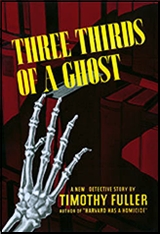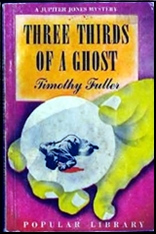REVIEWED BY DAVID VINEYARD:
MARK CHANNING – Nine Lives. Colin Gray #4. G G Harrap and Co, UK, hardcover, 1937. J. B. Lippincott, US, hardcover, 1937.

Warning, this is an adventure novel of the fantastic from the late 1930’s written by a former British Officer and Colonial resident of India and reflects that. If that is a non-starter for you I understand, but if you have a bit broader view, this is a rousing adventure by that rarest of things, a Colonial who went far deeper and with far more sympathy into his adopted homeland and produced a series of books that reflected that in the manner of another Colonial anti Imperialist writer, the more famous Talbot Mundy.
…there is an ancient saying that the cat has nine lives. Sometimes there happen uncanny things, which almost makes it seem as if the cat, as she steps down through the ages, meditative and aloof…is dimly aware of her ancient divinity and its obligations.
General Hector Dalziell, head of the British Secret Service in India, is in a state. Suleman (sic) Khan, a bandit fanatic who believes himself to be the reincarnation of Genghis Khan, and head of the cult the Servants of Genghis Khan a Pan Islamic movement rather like an early Al Queada, is on the rise and seeks to finance his adventure with the fabulous treasure found in Channing’s first novel, King Cobra, and Dalziell’s second best man is missing.
Channing, being rather saner than most pulp style adventure writers, spends a bit of time discussing fanaticism in religion among all faiths including Hindu, Muslim, and Christian, and it should be noted among Channing’s other works, he wrote about what he believed were the common basis for all faiths, and as the book progresses his hero will encounter allies across the spectrum of Indian faiths, Hindu and Muslim.
It is still a European’s view of India and Indian custom, but it is from a sympathetic eye, not a sneering one certain the native population are children incapable of governing themselves.
Which does bring us to our hero, General Dalziell’s number one man, and the hero of all four of Channing’s novels, Colin Gray, the von “Richtophen of the Indian Secret Service,” the bronzed grey-eyed near superhuman hero of the whole thing, a cross between Talbot Mundy’s Jimgrim and Athelston King, Doc Savage, and James Bond (he’s ruthless, beautiful women fall at his feet, and he likes sports cars with loud exhausts).
Gray is a bit on the splendid side, but Channing allows him to also be testy, and at times blind to the greater powers confronting him. He is not above being wrong, stubborn, and in awe of forces he may not understand. All four books pit the rather grounded Secret Service hero against forces of good and evil at war on different planes of existence and his key role is often despite his blindness to the greater world around him.
Lost worlds, mysterious cults, and secret wars at higher planes fill all the books, but thankfully always act as color to the adventures rather than over shadowing them if the supernatural puts you off.
Gray is currently in Cairo on his honeymoon with his bride Diana (who he met in King Cobra) and is the man who discovered the treasures of the Valley of the Mirror. He is quickly recalled with orders to secure the treasure or destroy it before Khoon can seize it and set India and Asia ablaze. After a bit of set up including a meeting with an expert in Egyptology in Alexandria, a murder attempt, news that Dalziell has been assassinated, and a hurried escape from Egypt our basic crew is assembled.
Gray of course on Dalziell’s last orders, his wife Diana (whose life is in danger apart from him), who won’t hear of staying behind, Limbu, Gray’s Gurkha orderly (and okay, though courageous as a lion he is a bit too Gunga Din at times), and one uninvited and unwanted crew member they simply cannot get rid of, a small black Kitten called Barfy adopted by Diana in Alexandria in the shadows of a statue of the goddess Bast, named after Egyptian mystic Dr. Barfopulos.
The latter had warned Gray and Diana in Cairo of a Mongol assassin of Khoon’s who made an attempt on their life and imparted the strange fact that Suleman Khoon hates and fears cats are the main figures though there are seven characters whose lives will be changed by events.
I needn’t point out after that introductory passage I quoted Barfy is vital and indeed central to the plot, but can reassure you she is not only a cute black kitten, she is also a tough, semi feral little beast who Gray cannot abide but tolerates and is eventually supremely grateful for and gets no more wordage than she deserves.
Mark Channing, Leopold Aloysius Matthew Jones, was a British officer who after distinguishing himself in the Boer War spent most of his career in India. By the time of the Gray novels he was an officer with a British Indian Bank and a student of Indian religion, something that plays a key role in many of his novels, including this one with a high placed adept who can apparently transport himself physically with his mind, something that proves as key to Gray’s ultimate success as a small near feral black kitten.
The fate of the East, is at hand, not the Raj, but all of the East and world peace. Suleman Khoon is no Dr. Fu Manchu, but an ambitious and intelligent political figure exploiting fanaticism for power and personal gain. Modern parallels are fairly obvious.
So our heroes are off into Kalistan, the land of blackness, where man and nature both oppose them, all a run up to a slam bang pulp style ending with a supernaturally malign tiger, Shiv, sent to murder a bewitched Gray and only a small black kitten between him and death, but Barfy is beloved of Sekmet, Bast, the Egyptian cat god and might just be Shiv’s match.
Never worry, though. Channing doesn’t cheat, it is all done straight with perfectly reasonable explanations for what happens, if you care to believe them.
For the course of the book, I align more with Limbu, who sees what the European’s do not.
Like Mundy before him, Channing is a gifted spinner of tales balancing the fantastic with humor and reality. If you enjoy this kind of pulp fantasia done well Channing is in the same class as Mundy, Ganpat, and Achmed Abdullah, and like them his love of the East and its peoples shows through.
Inevitably any Colonial is an outsider, but there are rare outsiders, John Masters, Paul Scott, James A. Michener, and Rumer Godden among them who glimpse something of the beauty of a world not their own and convey it.
The four Channing novels — King Cobra, White Python, Poisoned Mountain, and this — are pulp adventure, but superb pulp adventure and written with sympathy and even empathy for the people and culture they depict and not merely exploitation. Nine Lives is my favorite of the four, but if you want to try them White Python, the second Colin Gray book, is in print in a Trade Paperback edition from Armchair Fiction’s Lost Race Classics for a reasonable price, and King Cobra can be found among the Luminist Society Archives in pdf form.
Besides which I am a sucker for small feral black kittens touched by the ancestral memory of ancient Egyptian goddesses.



















